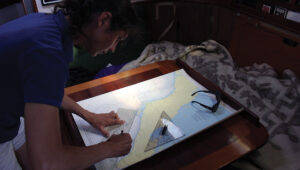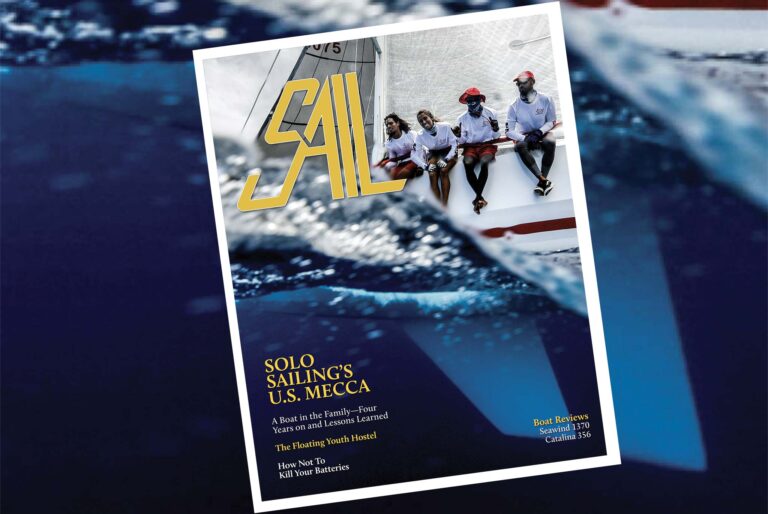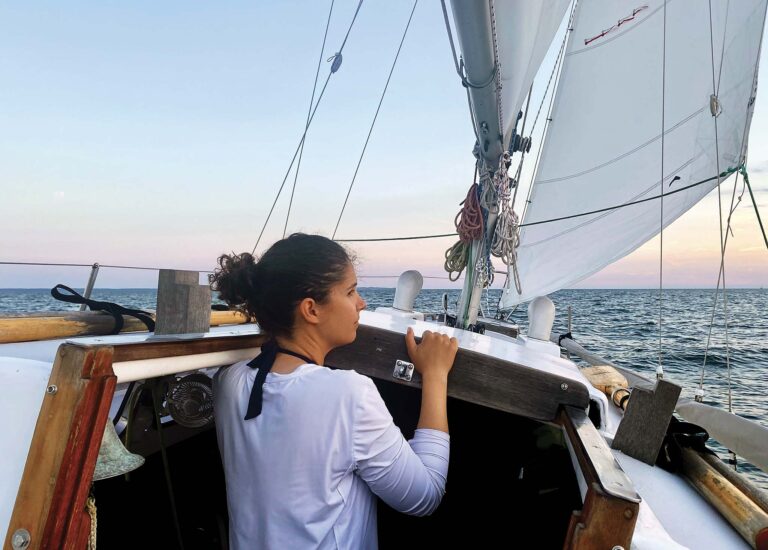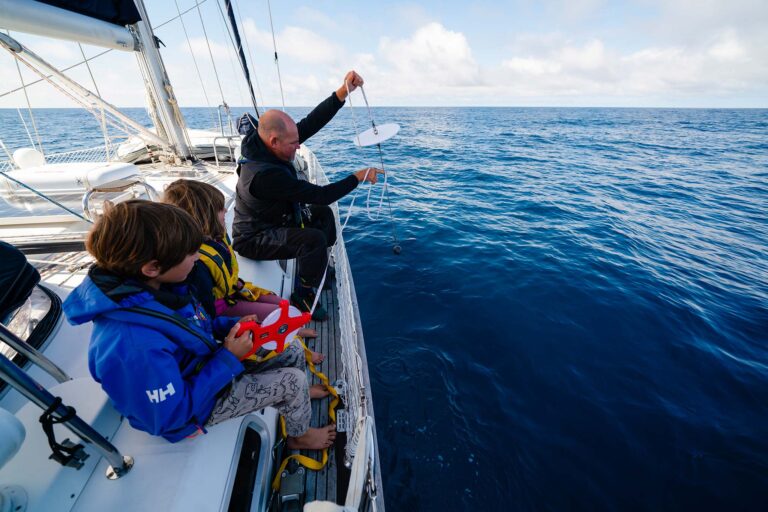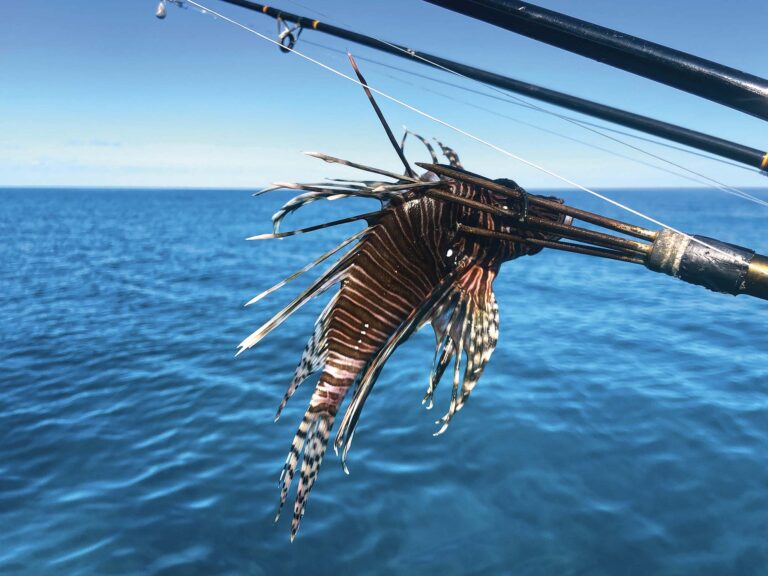Late last year, 59º North had our first annual “staff training” weekend aboard our Farr 65 Falken and an interesting debate emerged…how to calibrate the depth sounder?
Since I was a kid and for my entire professional sailing career, I took for granted that depth sounders read the water depth. Like, the actual water depth, as measured from the waterline. Obviously this requires a bit of adjustment since the sensor is never at the actual waterline, but normally a few feet below it, usually amidships just forward of the keel.
The way to do this calibration, incidentally, is dockside or at anchor with a lead line. Set the depth calibration to +/-0, then measure the actual waterline depth with the lead line in the same general position fore-aft as your depth sensor. The difference in readings is your calibration adjustment. For example, if your uncalibrated depth reads 10 feet, but the actual water depth as measured by lead line is 13 feet, there’s your +3-foot calibration.
But get this—not everyone does it this way! I was frankly taken aback when more than half of the 11 professional sailors on Falken that day said they calibrate their transducers from under the keel! WTF? They argued that from their perspective as freelance professionals, they sail on a lot of different boats, and the depth-below-keel calibration ensures they always know exactly how much margin they have before touching bottom.
Being the empathetic leader that I try to be, I kept an open mind and decided that well, if I’m outvoted here, and since there is a reasonable justification for it, maybe I can change my ways and we can adopt the depth-below-keel standard for the 59º North boats. I spent the rest of the night changing the instrument settings and updating the ship’s manual to this new way of thinking. Then I went to bed.
I woke up uneasy. This just didn’t seem right! But why did I have such a strong reaction to it? And is one way actually right with a capital R or not? It felt like people who use the “heading up” setting on chartplotters instead of “north up”—maybe not technically wrong, but it’s just oh so wrong!
So, I reached out to fellow SAIL contributor and seam’nship guru Tom Cunliffe.
“The perennial question of echo sounder depth!” Tom replied, clearly having had this debate many times before. “An echo sounder is a navigational instrument, not a ‘get-out-of-jail-free card,’ ” Tom explained in an email. “If it shows the water depth as 1.8m, and your boat draws 1.8m, then you are aground. When you require a depth input to confirm a position, you need to know the depth of water, not the depth under your keel. It’s as simple as that.”
Tom ranted on, hypothesizing that many charter companies and sailing schools calibrate to the keel because “they imagine their customers are so stupid that they can’t remember the draught of their yacht. To infantilize them like this is outrageous.”
I love that Tom signed the email “Keep the Faith!” As far as I was concerned, the debate was over. My instincts indicated that depth from waterline was Right, and Tom clearly and aggressively agreed. But that’s not the end of the story…
Emily Caruso, one of our most experienced skippers and the de facto leader of the depth-below-keel camp among our staff, had her own seam’nship guru in her DMs and sent the same question to the one and only Sir Robin Knox-Johnston, with whom she had worked on the Clipper Race.
“I set mine from the bottom of the keel on both boats,” Sir Robin succinctly replied (referring to the legendary Suhaili and his newer Farr 50 Saniula).
Well, now what? Everyone agreed that we needed a 59º North standard that would be consistent across our boats and programs and be taught the same way to all the crews who sail with us, regardless of who the skipper is.
If Tom Cunliffe and Sir Robin himself are at odds over this, surely there can’t be a right-with-a-capital-R way to do it. I decided that both are justified, so long as everyone knows the settings.
In the end, I reverted to the way I was most comfortable with, depth-below-waterline, aka actual depth, reset all the instruments on Falken, and updated the manual once and for all, though we officially acknow-ledge that there’s more than one way to skin that cat (and this makes for a great conversation starter at sea).
As for chartplotters, it’s north up, people.

March 2025


